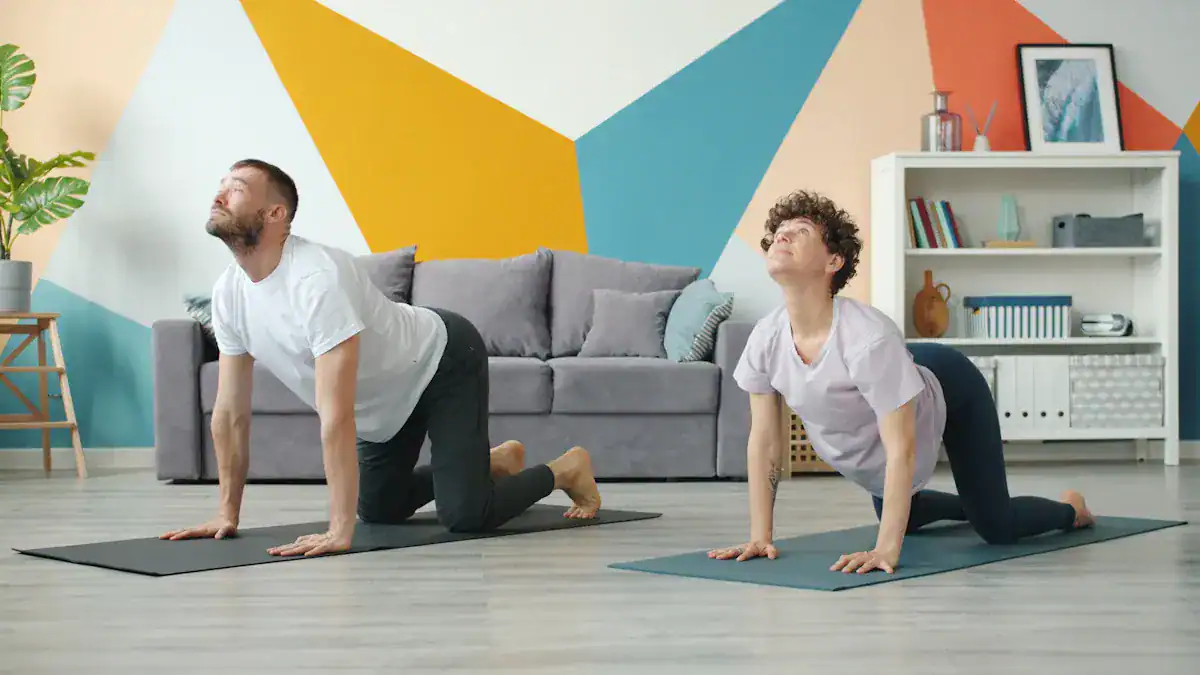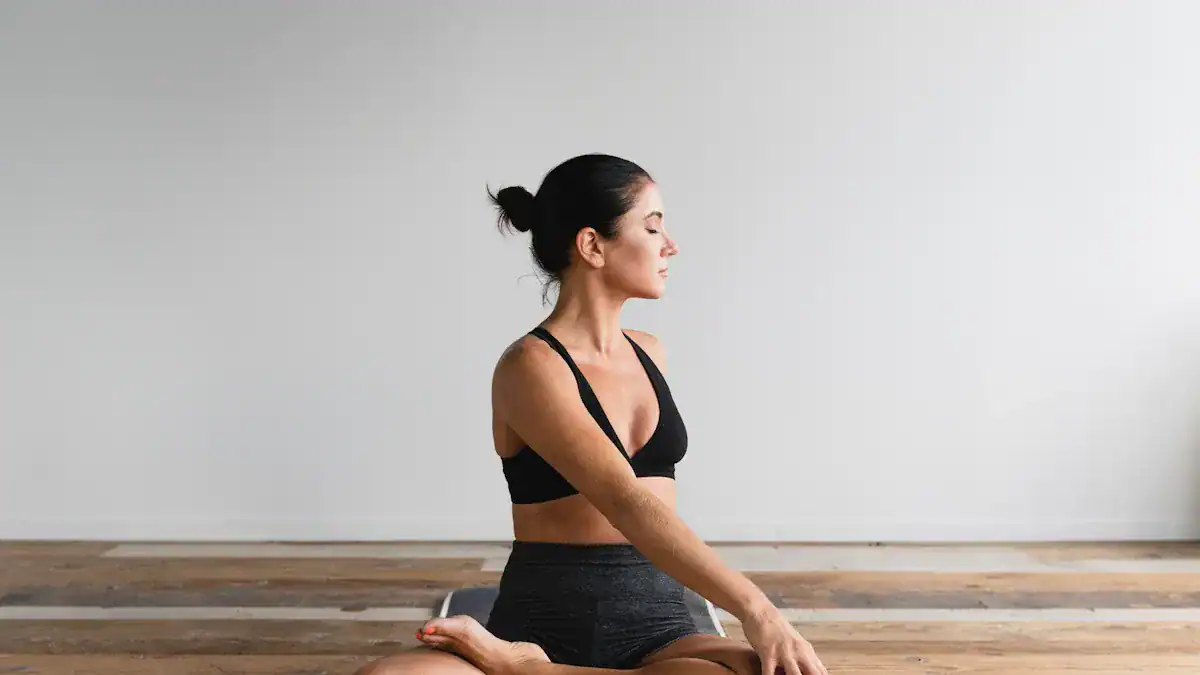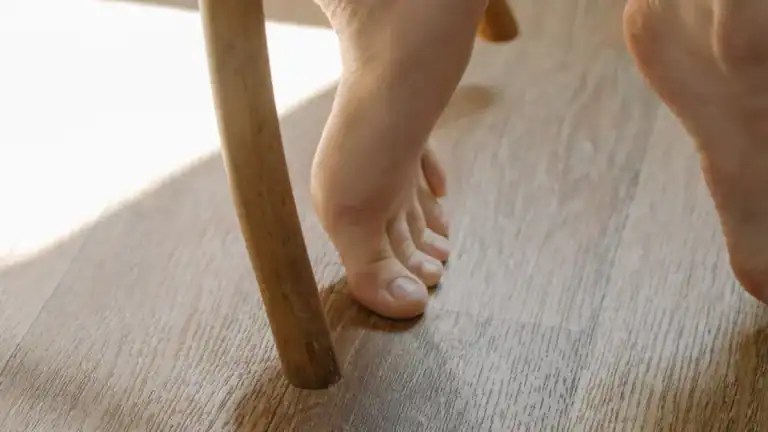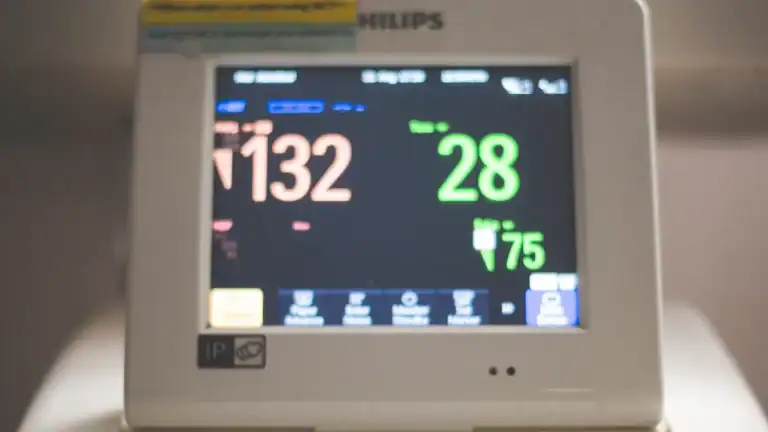
You experience persistent pain and limitations from spinal stenosis. Many individuals over 60 have some degree of this condition. Gentle, targeted exercises offer significant pain relief. These exercises improve your quality of life. This guide presents the top 8 relief moves for spinal stenosis. Always move safely and with knowledge.
Key Takeaways
Gentle exercises can greatly reduce pain from spinal stenosis. They improve your daily life.
Specific exercises like knee-to-chest stretches and pelvic tilts help open your spinal canal. They relieve pressure on nerves.
Always talk to your doctor before starting new exercises. Listen to your body and stop if you feel sharp pain.
Avoid exercises that arch your back too much or cause pain. High-impact activities can make your condition worse.
Make exercise a regular habit. Start slowly and increase your activity over time for the best results.
Spinal Stenosis and Exercise

What is Spinal Stenosis
Spinal stenosis is a condition affecting your spine. It means you have an abnormal narrowing of the spinal canal or neural foramen. This narrowing puts pressure on your spinal cord or nerve roots. This pressure often causes pain and discomfort.
Several factors can cause this narrowing. Aging is the most common reason. Over time, ligaments in your spine can thicken. Bones and joints may enlarge. Bone spurs can form. For example, disks can bulge, pressing on nerves. Arthritis, both osteoarthritis and rheumatoid arthritis, also contributes. Osteoarthritis causes disk degeneration and bone overgrowth. This narrows the spinal canal. Other conditions like spinal tumors or fractures can also lead to spinal stenosis.
Benefits of Exercise for Spinal Stenosis
Targeted exercises can significantly help reduce your symptoms. These movements work to decompress your spine. They strengthen the muscles that support your back. This improves your overall well-being.
Specific exercise routines offer many benefits. Stretching and strength training reduce stress on your body. They improve your posture. These exercises also make your muscles stronger, which brings significant relief. Core stabilization exercises are especially effective. They help reduce back pain. Lumbar flexion exercises are also beneficial. They gently open the narrowed spinal canal. This action helps decompress your spinal nerve roots. It also improves your spinal flexibility. This leads to more efficient movement and less pain. While research on exercise alone for quality of life is ongoing, studies show initial improvements in how you function daily. Combining manual therapy with these exercises may offer even more benefits.
Top 8 Spinal Stenosis Relief Exercises

These targeted exercises offer significant relief for spinal stenosis. They help you manage symptoms and improve your daily life. Remember to move gently and listen to your body.
1. Knee-to-Chest Stretch
This stretch helps decompress your spine. It can reduce low back pain.
How to Perform:
Lie on your back with your legs straight.
Bend your right knee. Bring it toward your chest.
Wrap your arms around your shin.
Pull your knee closer to your chest. You will feel a stretch in your lower back, hip, and glutes.
Hold this stretch for 20 to 30 seconds. Breathe deeply.
Switch sides. Repeat the steps.
Perform 2 to 3 sets on each side.
You can also do this with both legs together after doing single legs.
Benefits: The knee-to-chest stretch is very effective for spinal decompression. It elongates your spine. This action helps relieve pressure and massages your back. It also stretches your spine to ease discomfort.
Common Mistakes to Avoid: Do not pull your knee too hard. Avoid holding your breath. This can create tension.
2. Pelvic Tilts
Pelvic tilts help open joint spaces. They do this by gently rounding your back. This improves spinal mobility.
How to Perform:
Lie on your back. Bend your knees. Keep your feet flat on the floor.
Press your lower back into the floor. Pull your belly button toward your spine.
Tilt your pelvis up toward the ceiling. Tighten your gluteus and hip muscles.
Hold this pelvic tilt for 5 seconds.
Relax. Repeat this movement.
Perform 5 sets of 20 repetitions.
Benefits: This exercise gently rounds your back. It helps open the joint spaces in your spine. This improves your spinal mobility.
Common Mistakes to Avoid: Do not arch your back too much. Keep your movements small and controlled. Avoid straining your neck.
3. Cat-Cow Stretch
The cat-cow stretch is excellent for spinal flexibility. It helps relieve stiffness and tension.
How to Perform:
Start on your hands and knees. Place your hands under your shoulders. Keep your knees under your hips.
Cow Position (Inhale): Breathe in through your nose. Arch your lower back. Let your belly sink toward the floor. Roll your shoulders back. Lift your gaze.
Cat Position (Exhale): Breathe out through your nose. Reverse the position. Arch your back upward. Pull your belly in. Push your rib cage up. Look toward your navel.
Continue this movement. Inhale during the cow position. Exhale during the cat position.
Benefits: This stretch helps relieve tension. It improves spinal flexibility. It supports better movement. It gently stretches your spine. This keeps your back and other body parts strong. It also helps release neck and back tension.
Common Mistakes to Avoid: Do not rush the movements. Coordinate your breath with each movement. Focus on an even curve in your spine.
4. Child’s Pose
Child’s Pose is a restful position. It gently elongates your spine. It helps relieve lower back pain.
How to Perform:
Sit on your heels. Your big toes should touch. Spread your knees wide apart.
Reach your arms forward on the ground. Rest your forehead on the floor.
Breathe deeply. Allow your body to relax into the stretch.
If you have limited hip flexibility, place a folded blanket or bolster between your glutes and heels. You can also place a bolster under your torso for support.
Benefits: This pose gently elongates your spine. It relieves tension in your lower back. It promotes relaxation. Deep breathing helps your muscles release more effectively.
Common Mistakes to Avoid: Do not push into any pain. Use props if you feel discomfort in your hips, knees, or ankles.
5. Seated Forward Bend (Modified)
This modified stretch helps create space between your vertebrae. It reduces pressure on spinal disks.
How to Perform:
Sit tall on the floor. Extend your legs in front of you.
Use props wisely. Place yoga blocks or a folded blanket in front of you. You can rest your chest on them.
Elevate your hips with a folded blanket. This helps tilt your pelvis forward. It keeps your spine straight.
Engage your core muscles. Inhale deeply. Lengthen your spine through the crown of your head.
As you exhale, gently hinge at your hips. Lead with your chest. Keep your spine long. Avoid rounding your back.
Lower your chest onto the stacked props. Let your arms rest comfortably. Adjust the height of the props as needed.
Benefits: This movement creates space between your vertebrae. It is like therapeutic spinal decompression. It reduces pressure on spinal disks. It creates space for nerve roots. It promotes healthy spinal fluid circulation. This helps with back pain.
Common Mistakes to Avoid: Do not bend at your waist. This rounds your back. It can strain your lower back. Hinge at your hips instead. Keep your back flat. Listen to your body. Ease out of the pose if you feel any pain.
6. Wall Squats (Partial)
Partial wall squats strengthen your hip and leg muscles. They do this without aggravating your spinal stenosis.
How to Perform:
Stand with your back against a wall. Your feet should be shoulder-width apart.
Slide down the wall. Bend your knees slightly.
Keep your back flat against the wall. Your knees should stay behind your toes.
Hold this position for 10-15 seconds.
Slide back up. Repeat 8-12 times.
Benefits: This exercise strengthens your hips and legs. It addresses leg weakness. It avoids excessive lumbar extension. This is important because too much extension can worsen your condition.
Common Mistakes to Avoid: Do not squat too deep. Keep your knees aligned over your ankles. Avoid letting your knees go past your toes.
7. Bird-Dog Exercise
The Bird-Dog exercise enhances core stability. It strengthens your abdominal and back muscles.
How to Perform:
Start on your hands and knees. Your hands should be under your shoulders. Your knees should be under your hips.
Maintain a flat back and neutral spine. Keep your head in line with your body.
Draw your abdominal muscles in and up.
Simultaneously lift your right leg and left arm. Keep them straight.
Avoid excessive arching in your lower back. Keep your pelvis stable.
Hold the position for a few seconds. Return to the starting position.
Next, lift your left leg and right arm. Hold. Return to the starting position.
Continue alternating sides.
Benefits: This exercise targets your core muscles. It strengthens your abs and lower back. It also works your glutes and shoulders. This improves your overall stability and posture.
Common Mistakes to Avoid: Do not arch your lower back too much. Avoid lifting your arm and leg too high. This can compromise your stability. Keep your core engaged throughout the movement.
8. Gentle Walking
Gentle walking is a simple yet effective exercise. It improves mobility and strengthens muscles.
How to Perform:
Focus on good posture. Keep your head up. Relax your shoulders.
Start with short walks. Gradually increase the duration as you feel comfortable.
Consider water walking. The water’s buoyancy reduces pressure on your spine and joints. This allows for easier movement.
If walking causes pain, try alternatives. These include cycling or water-based activities.
Benefits: Water walking encourages movement without jarring impacts. It reduces pressure on your spine. It helps strengthen muscles. It enhances flexibility and promotes better balance.
Common Mistakes to Avoid: Do not push through pain. If walking triggers or worsens your symptoms, stop. Seek advice from a healthcare professional.
Important Considerations for Exercise
Consult Your Healthcare Provider
Before you start any new exercise program, talk to your doctor or a healthcare provider. This step is very important. If you are new to exercising, you should always consult with a healthcare provider. They ensure the program is safe for you. They give you personalized advice. A physical therapist can also guide you. They create a plan that fits your specific needs. This helps you avoid injury and get the most benefit from your movements. They understand your condition.
Listen to Your Body
Your body sends you signals. Pay close attention to these signals during and after your exercise. If you feel sharp pain, stop immediately. Muscle soreness lasting more than two days, especially with swelling or warmth, indicates you might be overdoing it. Other signs that an activity might be causing harm include profound fatigue, frequent colds or infections, insomnia, or a decline in your stamina. You might also notice an increased resting heart rate or constant irritability. Your body tells you when something is wrong. Respect these messages.
Avoid Painful Movements
Some movements can make spinal stenosis worse. You must avoid any movement that causes or increases your pain. For example, avoid extension stretches where your back arches backward, like the Cobra stretch or standing extension stretches. These can narrow nerve pathways. High-impact activities, such as running or jumping, put repetitive stress on your spine. They can irritate joints and worsen symptoms. Also, be careful with lower back exercises that involve too much extension, like the Superman. These can narrow your spinal canal. Avoid lifting heavy objects or engaging in contact sports. Always choose movements that feel comfortable and bring relief.
Integrating Exercises into Your Routine
Tips for Consistency
Making exercise a regular part of your life helps manage spinal stenosis. You can improve your adherence to a routine. First, assess what makes exercise difficult or easy for you. Design your program to fit your preferences and schedule. Tailor your exercises to your individual needs. Find activities you enjoy, like walking with a podcast or dancing. This makes it easier to stick with your plan. Seek social support. Invite a friend or join a class. This adds a social element to your routine. Set specific, measurable, achievable, realistic, and timed (SMART) goals. Make sure these goals are within your control. Regularly re-evaluate them.
Frequency and Progression
Aim to exercise more than once per week. Programs with a moderate overall duration are often most effective. When you increase your activity, do it safely. Follow the 10% rule for safe progression. Increase intensity by no more than 10% per week. For example, if you walk for 20 minutes, try 22 minutes next week. Gradually increase weight, repetitions, or resistance over time. Increase only one variable at a time. Listen to your body. Ensure you get enough recovery. Take at least one full rest day per week. Get 7-9 hours of sleep each night.
Making Exercise a Habit
You can make exercise a daily habit. Start with easy, short-term goals. Even 10 minutes of activity daily is beneficial. Reward yourself for meeting your daily goals. This reinforces the behavior. Be specific about your routine. Clearly define when and where you will exercise. For example, “I will walk through the neighborhood at 5 PM tomorrow.” Use habit stacking. Link your new exercise to an existing routine. You could exercise before your evening meal. Set up physical cues. Place your gym shoes by the door. This prompts you to exercise. Believe in your ability. Start with easy goals to build your confidence. Gradually increase the challenge as you progress. If you miss a day, forgive yourself. Commit to resuming exercise the next day.
Consistent, gentle movement is crucial for managing spinal stenosis symptoms and achieving lasting pain relief. You can expect many benefits from these exercises. They offer improved mobility, reduced pain, and a better quality of life. Regular exercise strengthens spinal stability and slows disease progression. It also enhances your mobility and boosts mental health. Physical therapy further improves day-to-day activities, minimizes surgery risk, and promotes better posture. Start slowly. Be patient with your progress. Always prioritize safety by consulting healthcare professionals. You take an active role in your health journey.
FAQ
Can I do these exercises if I have severe pain?
No, you should not push through severe pain. Always listen to your body. Consult your doctor or a physical therapist first. They ensure the program is safe for your back. This prevents further injury to your spine.
What exercises should I avoid with spinal stenosis?
Avoid movements that increase your pain. Do not do a rotational stretch. Avoid exercises that arch your back too much. This can put stress on your back. High-impact activities can also worsen your lower back pain. Your physical therapy team can show you safe alternatives.
How often should I do these exercises?
Aim for consistency. Perform these exercises daily or several times a week. Start with short sessions. Gradually increase duration as you feel comfortable. Regular movement helps your spine stay flexible and improves your mobility.
What if these exercises do not help my lower back pain?
If you do not find relief, seek professional help. A physical therapist can offer personalized guidance. They might suggest other exercises, like bridge exercises. A bridge exercise can strengthen your back. They can also recommend other treatment options for your lower back pain.
When should I see a doctor for my back pain?
If your back pain worsens, or you experience new symptoms, see your doctor. They can assess your back. Persistent pain needs professional evaluation. A physical therapy referral might be necessary for your back.




